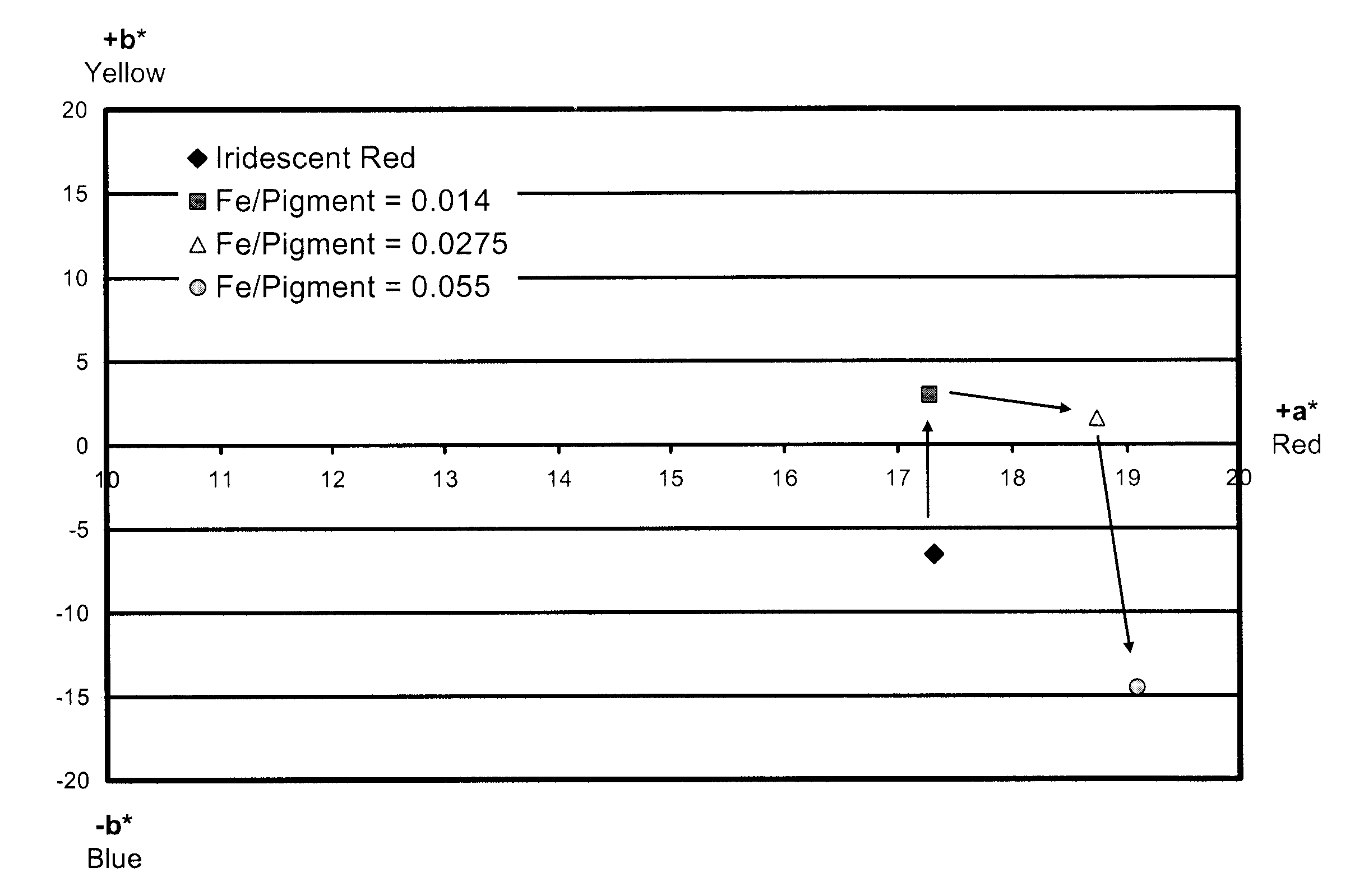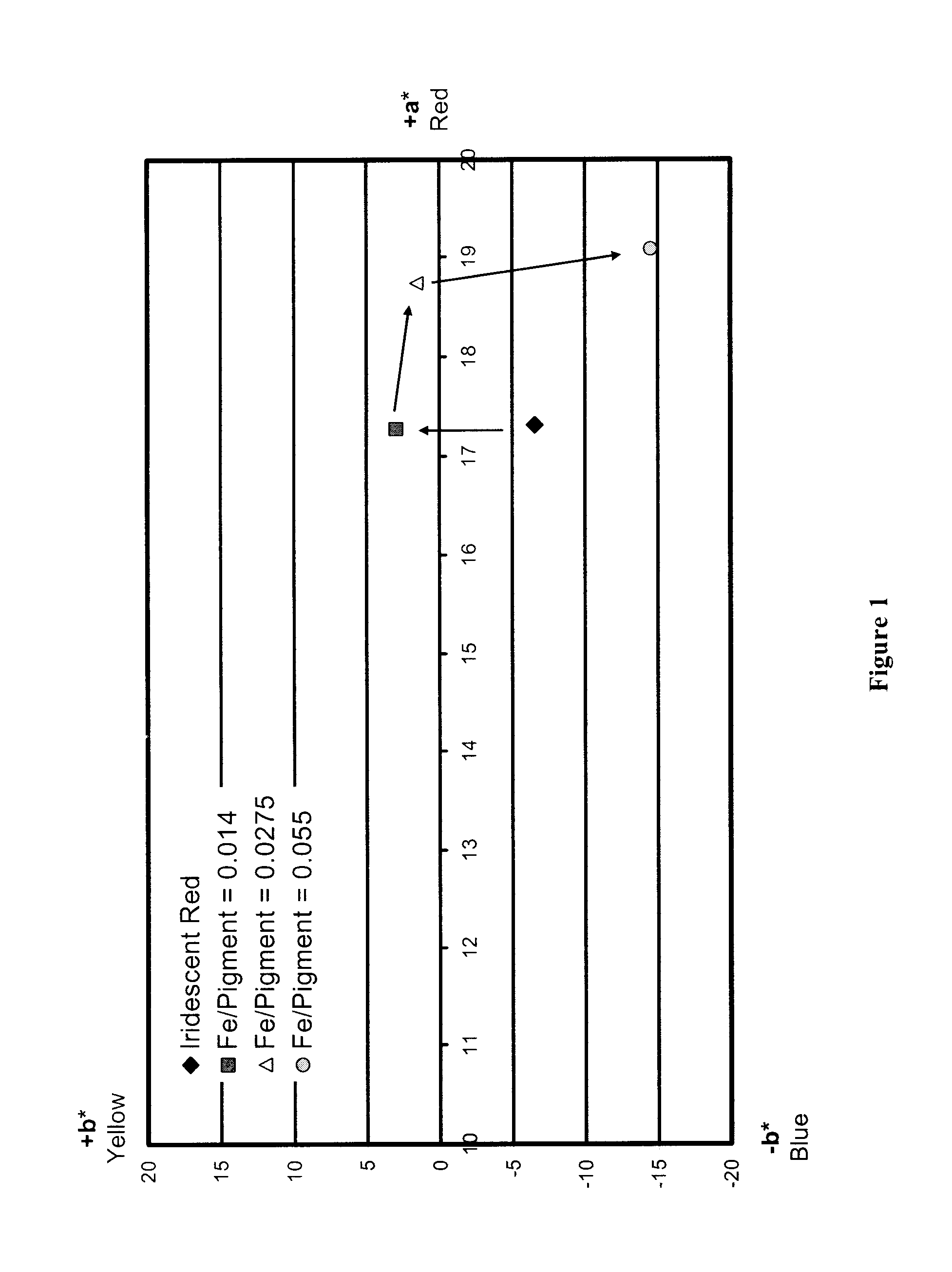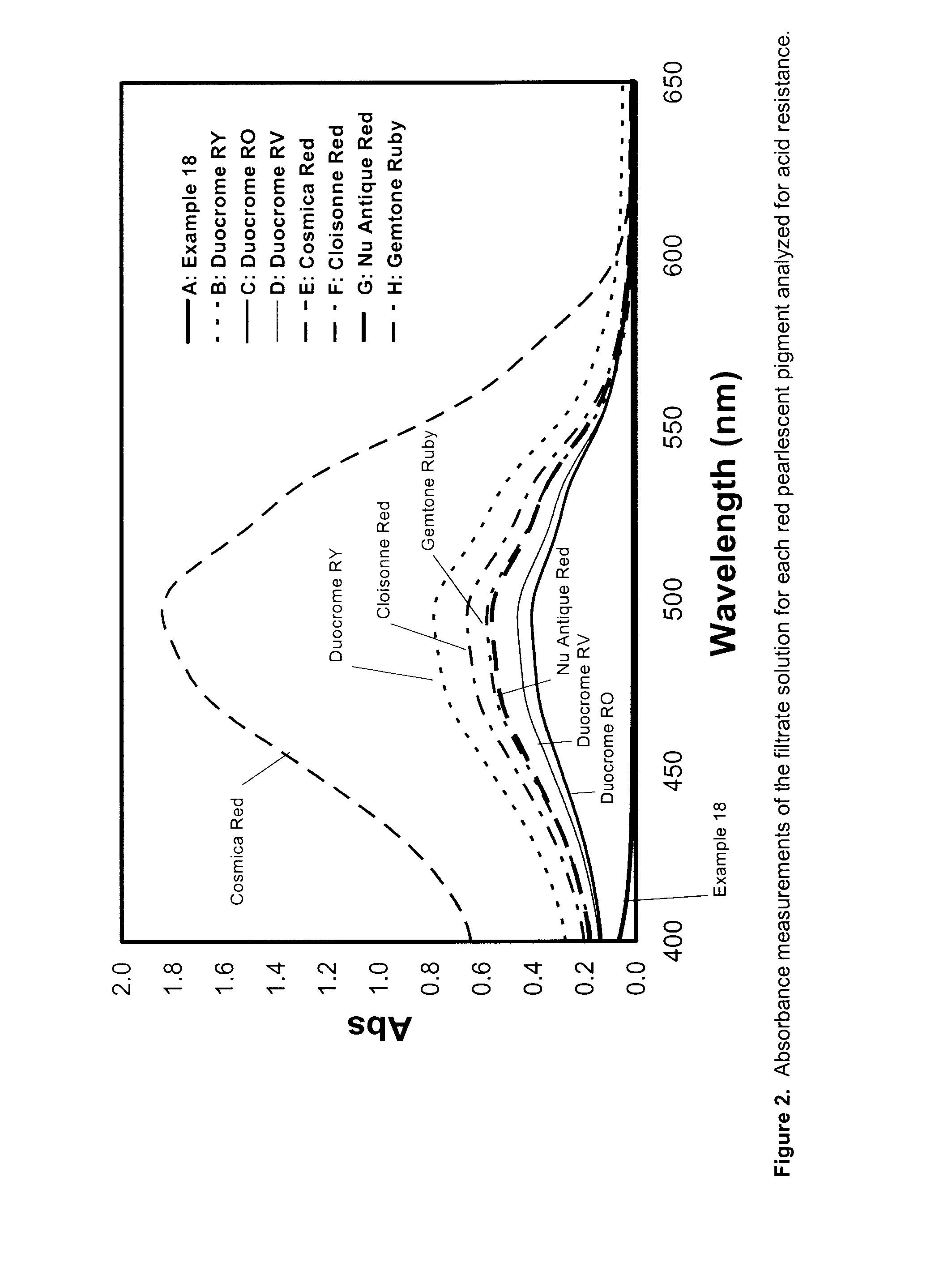Security pigments and the process of making thereof
a technology of pigments and pigments, applied in the field of multicolored lustrous pearlescent pigments, can solve the problems of lack of transparency, lack of luster, and a lot of dirt in the blend, and achieve the effect of reducing the number of colors, and improving the quality of the pigmen
- Summary
- Abstract
- Description
- Claims
- Application Information
AI Technical Summary
Benefits of technology
Problems solved by technology
Method used
Image
Examples
example 1
FeCl3—Urea Homogenous Hydrolysis Process for Depositing an Easily Reducible FeOOH Layer
[0056]A 0.1M HCl solution (356.9 g) was added to a 500 ml cylindrical reaction vessel blade (for gentle stirring and non-sticking property). The solution was stirred at 175 RPM. A 7.1 g 45% wt FeCl3 Stock Solution (Riedel 12322, 45% wt FeCl3, 55% water) was add drop-wise into the reactor.[0057]Urea (16 g) was added slowly into reactor under agitation.[0058]Sky Chemical Russet Pigment (20 g) was added to the reactor, and stirred for 5 minutes.[0059]The temperature was increased 2° C. / min to 80° C. and held for 4 hour.[0060]The pigment is recovered by filtration and washed with distilled water.
example 2
Solid-On-Solid Catalytic Aqueous-Phase Hydrogenation Process
[0061]Step 1—Wet Micronization of Catalyst[0062]Platinum oxide powder (200 mg, 10-50 micron grade, Aldrich 206032) was stirred in 100 g PEG 400 (i.e., 2 mg PtO2 / g fluid).[0063]The slurry was loaded into a Eiger-Mill equipment with 0.5 mm zirconia media and water cooling jacket. The power was set to maximum and ran for 6 hours. The final slurry was a greenish black and did not settle for about 1 to 2 days.[0064]The particle size was checked with dynamic light scattering (Horiba DLLS Particle Sizer) and OM (optical microscope, Nikon) to ensure no particles larger than 1 micron were left.
[0065]Step 2—Hydrogenation[0066]PEG 400 (100 g), FeOOH (20 g) coated red pearl pigment (i.e., Sky Chemical Super Russet) and 3 g of the micronized PtO2 slurry (2 mg catalyst / g fluid) from step 1, was loaded into a steel-constructed hydrogenation chamber.[0067]An agitator was lowered into the chamber. The chamber was closed and connected to the...
example 3
Preparation of Homogenous Platinum Collidal Nanoparticle Catalyst
[0078]Polyvinylpyrrolidone (PVP) Reductant Solution: Anhydrous ethylene glycol (80 g) and K15 PVP (10 g, Fluka 81390 or ISP) were mixed at 3000 RPM with a Hauschild mixer until dissolved. The mixture was added to a 1 L 3.5″ Teflon Coated Cylindrical reactor with a 2″ PTFE coated 3-leaf blade, and a nitrogen purging line.[0079]Precursor Solution: Anhydrous ethylene glycol (80 g) and H2PtCl6-6H2O salt (0.5 g, SA C3044) were added to a 4 oz jar with a magnetic stir bar, and stirred until dissolved. The liquid was sonicated for 10 minutes to remove oxygen then added to the PVP reductant solution.[0080]Mixing of Precursor and Reductant: Anhydrous ethylene glycol (80 g) was added to the reaction vessel, followed by agitation at roughly 200 RPM to gently mix precursor with reductant at room temperature. The N2 purging line was lowered to just below the liquid surface to provide an insert gas blanket.[0081]Thermal Activation: ...
PUM
| Property | Measurement | Unit |
|---|---|---|
| Fraction | aaaaa | aaaaa |
| Fraction | aaaaa | aaaaa |
| Fraction | aaaaa | aaaaa |
Abstract
Description
Claims
Application Information
 Login to View More
Login to View More - R&D
- Intellectual Property
- Life Sciences
- Materials
- Tech Scout
- Unparalleled Data Quality
- Higher Quality Content
- 60% Fewer Hallucinations
Browse by: Latest US Patents, China's latest patents, Technical Efficacy Thesaurus, Application Domain, Technology Topic, Popular Technical Reports.
© 2025 PatSnap. All rights reserved.Legal|Privacy policy|Modern Slavery Act Transparency Statement|Sitemap|About US| Contact US: help@patsnap.com



